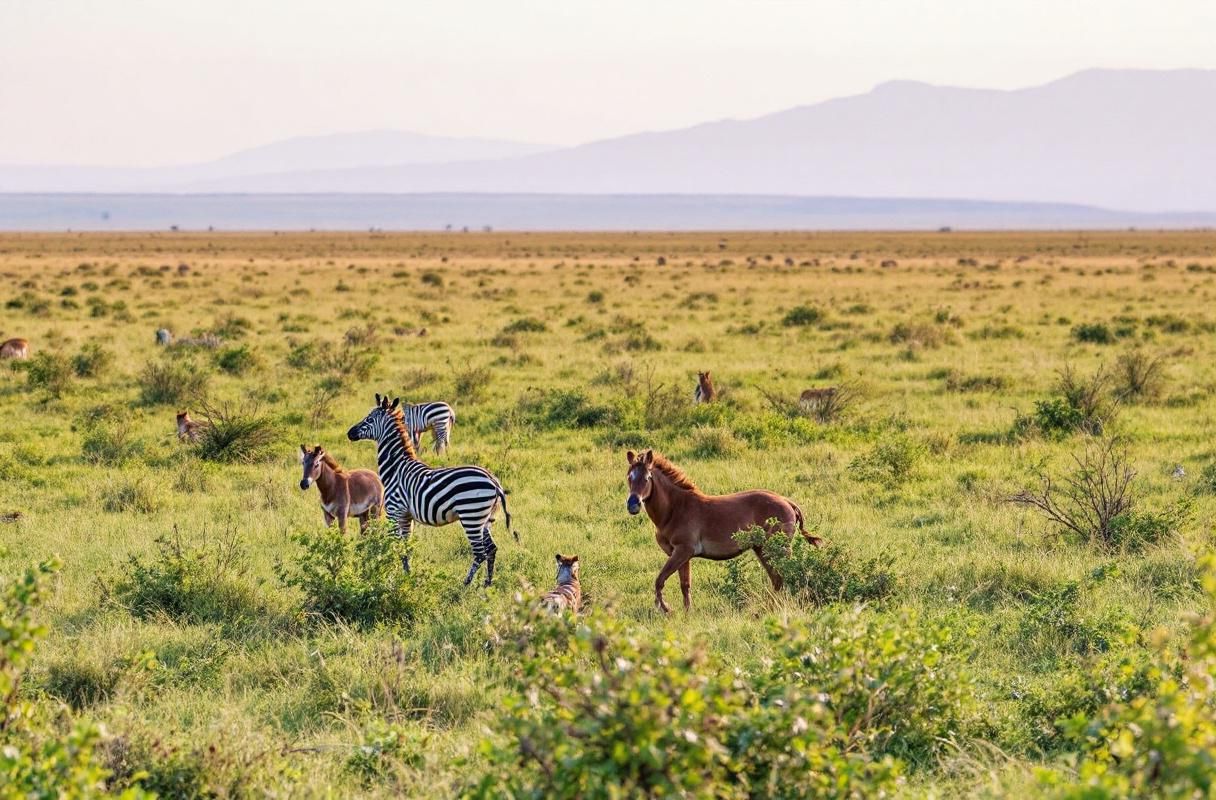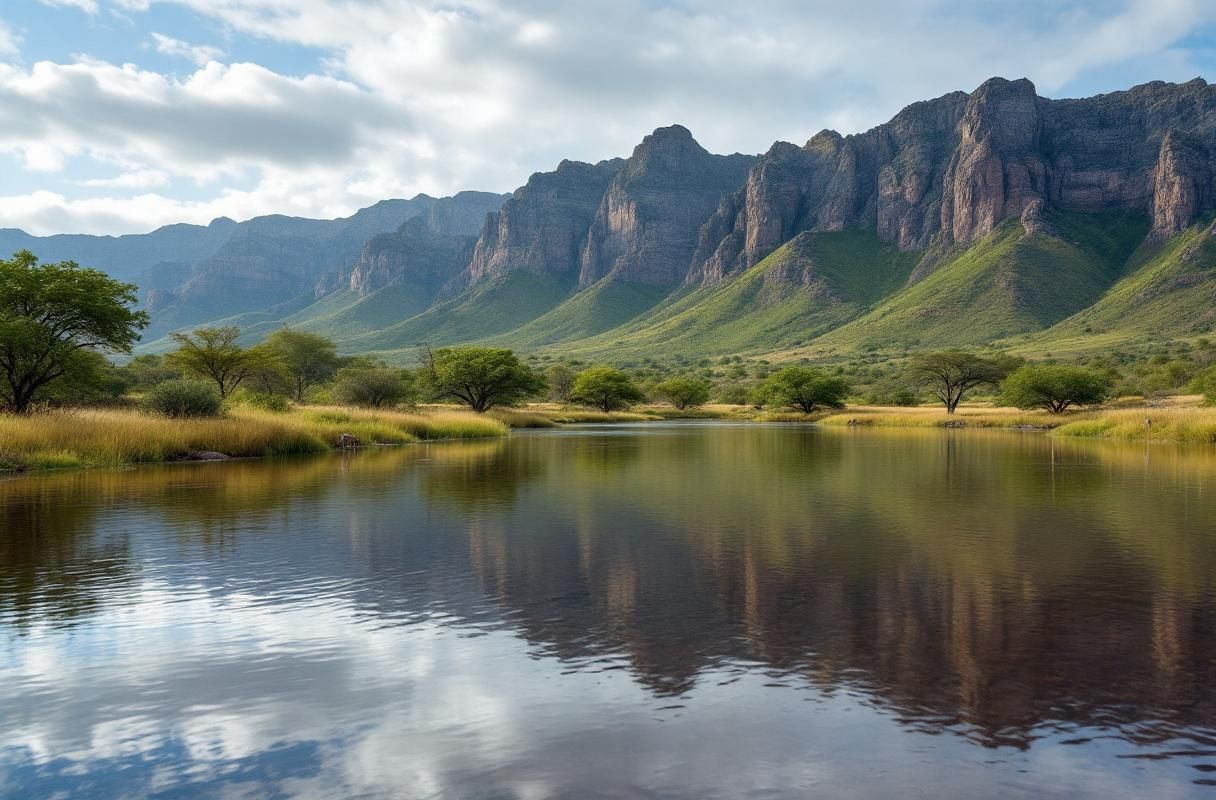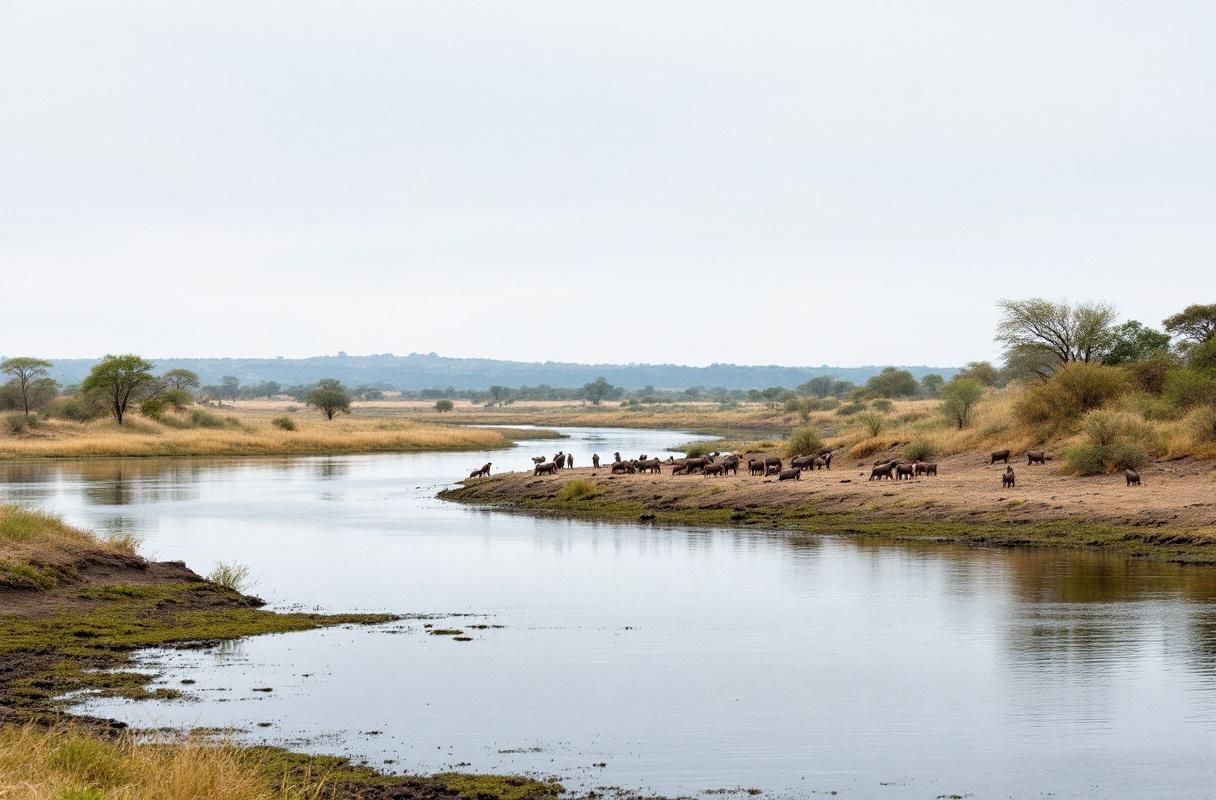
Experiencing the wonder of African animals in their natural habitat is a dream for many wildlife enthusiasts and adventurers alike. Africa is home to some of the most diverse and captivating wildlife on the planet, making it a prime destination for safari tours and ecological exploration. From the vast savannahs of the Serengeti to the lush wetlands of the Okavango Delta, the continent offers countless opportunities to witness majestic creatures in their environment. In this article, we will delve into the best places to see African animals in the wild and explore how climbing Kilimanjaro can benefit local wildlife conservation efforts.
[image:img_1754001146815_gl3onemuv]

The Serengeti National Park, located in Tanzania, is arguably one of the most famous wildlife reserves in the world. Stretching over 14,000 square kilometers, this UNESCO World Heritage site is renowned for its annual wildebeest migration, where millions of wildebeest, zebras, and gazelles traverse the plains in search of greener pastures. The park's diverse ecosystems, which include grasslands, woodlands, and riverine forests, provide habitats for a wide array of African animals, including lions, elephants, and rhinoceroses.
Embarking on a safari tour in the Serengeti can provide an unparalleled experience for wildlife enthusiasts. Tour operators offer various packages ranging from budget camping safaris to luxury lodges. Choosing a reputable tour company is essential, as they often employ knowledgeable guides who can enhance your experience by sharing insights about the wildlife and ecosystem.
When planning a safari, consider the timing of your visit. The best months to witness the great migration are typically from June to October when the herds congregate in the northern Serengeti. However, each season brings unique opportunities for wildlife viewing. For instance, during the wet season (November to April), you may spot newborn animals and enjoy fewer crowds.
[image:img_1754001158121_tk90e0twr]

Kruger National Park, located in northeastern South Africa, is one of Africa's largest game reserves, spanning over 19,000 square kilometers. The park is home to an impressive variety of African animals, including the "Big Five": lions, leopards, elephants, buffalo, and rhinoceros. The diverse habitats within the park, such as savannahs, woodlands, and riverine areas, attract a rich assortment of wildlife and bird species.
Visitors to Kruger National Park have multiple options for safari tours, including self-drive adventures, guided tours, and walking safaris. Self-drive safaris allow for a more personal experience, giving travelers the freedom to explore at their own pace. On the other hand, guided tours provide in-depth knowledge from experienced rangers who can help spot elusive animals and share information about the park's ecosystems.
When planning your safari, it's crucial to book accommodations in advance, especially during peak seasons. The park offers a range of options, from budget-friendly campsites to luxury lodges, catering to various preferences and budgets.
[image:img_1754001168408_02t01526f]

Chobe National Park, located in Botswana, is known for its impressive elephant population and stunning riverine landscapes. The park covers approximately 11,700 square kilometers and features diverse habitats, including floodplains, woodlands, and the Chobe River, which is a lifeblood for many species. Visitors can expect to see large herds of elephants, as well as hippos, crocodiles, and an array of birds.
One of the most distinctive features of Chobe National Park is the opportunity for boat safaris along the Chobe River. These boat tours provide a unique vantage point for observing wildlife and allow for close encounters with animals that frequent the riverbanks. Additionally, traditional game drives are available, offering the chance to explore the park's interior and spot predators like lions and leopards.
For those looking to combine land and water experiences, consider booking a multi-day safari that includes both game drives and boat tours. This diverse approach can maximize wildlife sightings and provide a more comprehensive understanding of the park's ecosystems.
Mount Kilimanjaro, Africa's highest peak, is located in Tanzania and attracts thousands of trekkers each year. While the mountain is primarily known for its stunning landscapes and challenging climbs, its significance extends beyond adventure tourism. The surrounding areas are crucial for local wildlife conservation efforts, and climbing Kilimanjaro can play a vital role in supporting these initiatives.
Climbing Kilimanjaro contributes to local economies and conservation by generating revenue for communities and organizations focused on wildlife preservation. The fees collected from climbers often support national parks, wildlife reserves, and conservation projects aimed at protecting endangered species and their habitats.
Moreover, responsible trekking companies prioritize sustainable practices, such as minimizing environmental impact and supporting local guides and porters. By choosing a reputable trekking company, climbers can ensure that their adventure contributes positively to the region's conservation efforts.
In addition to the economic benefits, climbing Kilimanjaro can also raise awareness about the importance of wildlife conservation. Many trekking companies incorporate educational components into their tours, sharing insights about the unique ecosystems found on the mountain and the challenges faced by local wildlife. This increased awareness can inspire climbers to become advocates for conservation efforts, both locally and globally.
One common misconception is that safari tours are only accessible to those with deep pockets. While luxury safaris do exist, there are numerous budget-friendly options available. Many parks and reserves offer affordable camping experiences and self-drive safaris, allowing travelers to explore at their own pace without breaking the bank.
Another misconception is that wildlife sightings are guaranteed during safari tours. While many parks boast high animal populations, wildlife is unpredictable, and sightings can vary based on factors such as weather, time of day, and season. To enhance the chances of seeing African animals, consider visiting during peak seasons and choosing guided tours with experienced rangers who understand animal behavior.
As you embark on your journey to discover the best places to see African animals in the wild, remember that your adventure can significantly impact local conservation efforts. By participating in safari tours and climbing Kilimanjaro, you not only enrich your experience but also contribute to the preservation of these incredible creatures and their habitats.
If you're ready to implement these African animals strategies for your business, Banana Slug Club is here to help. Our services can guide you through planning your dream safari while ensuring that your adventure supports wildlife conservation. For more information, visit our website or contact us today. Together, we can make a difference while enjoying the wonders of Africa's wildlife.
Get free resources, early access to new features and updates.
No spam. Just fun educational emails!